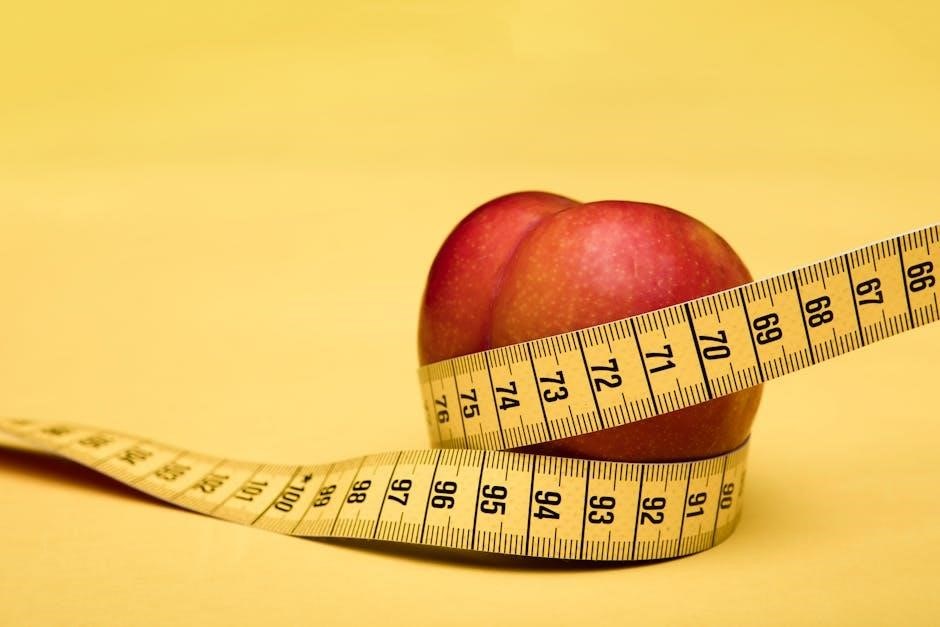What are AN Fittings?
AN fittings, short for Army-Navy fittings, are a type of specialized fluid fitting used to connect hoses and rigid metal tubing. They are commonly used in performance automotive, aerospace, and marine applications due to their reliability and versatility.
What are AN Fittings?
AN fittings are high-performance components widely used in automotive, aerospace, and marine industries. These fittings, standardized by the Army-Navy during World War II, provide reliable and leak-free connections for fluid transfer. They feature a unique 37-degree flare design, ensuring a secure seal between the fitting and the hose or tube. Available in various sizes and materials, AN fittings cater to diverse applications, offering exceptional durability and resistance to high pressures and temperatures. Understanding the AN standard and its precise dimensions is crucial for proper selection and installation, guaranteeing optimal performance and safety in demanding environments.
AN fittings utilize a unique sizing system known as “dash” sizes. These numbers, such as -4, -6, or -8, represent the fitting’s diameter in sixteenths of an inch, offering a simple way to identify dimensions.
The Dash Size System
The AN dash size system is a fundamental aspect of understanding AN fittings. Each fitting is designated by a number preceded by a dash, such as -4, -6, -8, and so on. This number indicates the fitting’s size in increments of 1/16th of an inch. For instance, a -6 AN fitting corresponds to 6/16th of an inch, which simplifies to 3/8th of an inch. This measurement typically refers to the outer diameter of the rigid metal tube that the fitting is designed to be used with. While some sizes might be missing from standard charts, the dash size provides a quick reference for compatibility and selection.
Understanding AN Size Designations
How AN Sizes Relate to Inch Fractions
Understanding the relationship between AN sizes and inch fractions is crucial for accurate selection. The AN dash size directly translates to a fraction of an inch, with the dash number representing the numerator and 16 as the denominator. Thus, a -10 AN fitting is equivalent to 10/16 of an inch, simplifying to 5/8 inch. This fraction typically refers to the outer diameter of the tubing or the approximate inner diameter of the hose that the fitting is intended to accommodate. Knowing this conversion allows for easy comparison with standard fractional measurements when determining the appropriate fitting size for a specific application, ensuring compatibility and proper fluid flow.
AN Fitting Size Chart: A Comprehensive Guide
A comprehensive AN fitting size chart is essential for determining the correct fitting. It shows the correlation between dash size, thread size, and hose size, ensuring proper selection and compatibility.
Thread Size and Dash Size Correlation
Understanding the thread size and dash size correlation is crucial when selecting AN fittings. The dash size, indicated by a number following a dash (e.g., -6), represents the fitting’s size in 1/16 inch increments. For instance, a -6 AN fitting corresponds to 6/16 inch or 3/8 inch. Each dash size has a specific thread size associated with it, which is essential for proper mating and sealing.
Referencing an AN fitting size chart is vital to confirm these dimensions. These charts provide thread information alongside the AN dash size, offering a clear visual guide to actual sizes. Correctly identifying these correlations ensures leak-free connections in fluid transfer systems.
Hose Size and AN Fitting Compatibility
Ensuring hose size and AN fitting compatibility is vital for effective fluid transfer systems. AN fittings are designed to match specific hose inner diameters (ID), guaranteeing a secure and leak-proof connection. The AN dash size corresponds to the hose ID in 1/16 inch increments; for example, a -8 AN fitting is generally compatible with a hose having a 1/2 inch ID (8/16).
Consulting an AN fitting size chart is essential to verify compatibility. These charts provide detailed information on hose sizes that correspond to each AN fitting size. Selecting the correct AN fitting for the hose size prevents issues like leaks, pressure drops, and potential system failures, optimizing performance and safety.
Understanding the key dimensions of AN fittings is crucial for proper selection and installation. These dimensions include thread size, flare angle, and overall length. Accurate measurements ensure compatibility and prevent leaks in fluid systems.
Male Thread Dimensions
Male AN fittings feature external threads that mate with female AN fittings. The thread size is a critical dimension, typically specified using the AN dash size. Each dash size corresponds to a specific thread diameter and pitch, ensuring proper engagement and sealing. Accurate measurement of the male thread diameter is essential for identifying the correct fitting size.
The male thread dimensions are based on the Unified National Fine (UNF) thread standard, providing a consistent and reliable connection. Referencing an AN fitting size chart pdf will provide the accurate thread dimensions related to the specific AN size. This chart is a crucial tool to avoid errors.

Key Dimensions in AN Fittings
Female Thread Dimensions
Female AN fittings incorporate internal threads designed to mate with male AN fittings. Like their male counterparts, the thread size is crucial for proper sealing and connection. The dimensions are specified using the AN dash size, which corresponds to a specific inner diameter and thread pitch. The female side of the fitting has a reverse 37 degree flare that seals on the male flare.
Accurate measurement of the female thread inner diameter is essential. These dimensions conform to the Unified National Fine (UNF) thread standard, ensuring compatibility and reliability. Consulting an AN fitting size chart PDF is vital for identifying the precise dimensions.
AN fittings are manufactured from various materials, including aluminum, steel, stainless steel, and brass. The choice of material depends on the application, fluid type, pressure, and temperature requirements for optimal performance.
Common Materials Used in AN Fittings
Aluminum is a popular choice for AN fittings due to its lightweight nature and corrosion resistance. It’s commonly used in fuel, oil, and coolant systems where weight is a concern. Steel AN fittings offer higher strength and are suitable for high-pressure applications like hydraulic systems. Stainless steel provides excellent corrosion resistance, making it ideal for marine and chemical environments. Brass AN fittings are often used in low-pressure applications, offering good corrosion resistance and cost-effectiveness. The selection of material should match the requirements.

AN Fitting Materials and Applications
Applications Across Different Industries
AN fittings find widespread use across diverse industries, including automotive, aerospace, marine, and motorsports. In the automotive sector, they are essential for fuel, oil, and coolant systems, ensuring reliable fluid transfer. Aerospace applications rely on AN fittings for hydraulic and pneumatic systems, demanding high performance and safety. Marine environments utilize stainless steel AN fittings for their corrosion resistance in saltwater applications. Motorsports employ AN fittings extensively due to their durability and leak-free performance under extreme conditions, contributing to overall vehicle reliability and performance in racing scenarios and high-performance vehicles.
Accurately measuring AN fittings requires tools like calipers for outer diameter, thread gauges for thread size, and a ruler. These tools will ensure you get the correct size and type.
Tools Required for Accurate Measurement
To accurately measure AN fittings, several tools are essential. A precise set of calipers is needed for measuring the outer diameter of the fitting and the inner diameter of the threads. Thread gauges, both male and female, are crucial for identifying the thread size and pitch. A high-quality ruler or measuring tape will help determine the overall length of the fitting. Additionally, a protractor can be useful for measuring the angle of flared fittings. Having these tools on hand ensures accurate measurements, which is vital for selecting the correct AN fitting for your application and avoiding leaks or compatibility issues. Proper measurement is key.
How to Measure AN Fittings
Step-by-Step Measurement Guide
Measuring AN fittings accurately requires a systematic approach. First, identify whether you’re measuring a male or female fitting. For male fittings, use calipers to measure the outside diameter of the threads. Then, use a thread gauge to determine the thread size and pitch. For female fittings, measure the inside diameter of the threads using calipers and again use a thread gauge. Next, measure the overall length of the fitting from end to end. Finally, if the fitting is flared, use a protractor to measure the flare angle, ensuring it’s the standard 37 degrees. Record all measurements carefully to identify the correct AN size.
Many believe AN sizes directly correlate to inch measurements, which isn’t always accurate. AN sizes are based on 1/16-inch increments, but the actual dimensions can vary. Understanding the AN standard is essential to avoid confusion.
Understanding the AN Standard
The AN (Army-Navy) standard, established by the aerospace industry, uses a dash size system where each number represents 1/16 of an inch; For example, -6 AN fitting corresponds to 6/16 or 3/8 of an inch, which often refers to the fitting’s inner diameter. However, this isn’t a precise measurement of every dimension. It is crucial to consult an AN fitting size chart PDF for accurate dimensions, as some sizes are excluded.
Misunderstandings often arise when assuming all dimensions directly correlate to the dash size, leading to incorrect fitting selection and potential leaks. Therefore, always cross-reference with a comprehensive chart.

Common Misconceptions About AN Fitting Sizes
Avoiding Over-Tightening
One common mistake is over-tightening AN fittings, which can cause damage and leaks. AN fittings use a 37-degree flare to create a seal, and excessive force can deform the flare or the threads. When installing AN fittings, tighten them according to the manufacturer’s torque specifications. Typically, this involves tightening the fitting 1/8 to 1/4 turn past snug.
Using an AN fitting size chart PDF can also help ensure you’re using the correct tools and techniques for installation. Always refer to the fitting’s specifications and recommended torque values to prevent damage. Remember, proper installation is key to a leak-free seal.
Numerous resources are available for detailed AN fitting information. These include PDF guides, eBooks, and online charts and tables, providing comprehensive details on sizes, dimensions, materials, and applications, aiding in proper selection and installation.
PDF Guides and eBooks
For in-depth knowledge, PDF guides and eBooks are invaluable resources. The Speedflow AN Hose and Fitting Guide, a 28-page PDF, offers a comprehensive introduction to AN fittings and adaptors. These resources often include detailed cut-away images, step-by-step fitting guides, and measurement instructions. They cover various aspects, from choosing the right hose type and hose ends to understanding AN fitting dimensions.
These guides are essential for both beginners and experienced users, providing clear explanations and visual aids to ensure proper selection and installation. Many manufacturers and suppliers also offer downloadable PDFs with size charts and technical specifications.

Resources for AN Fitting Information
Online Charts and Tables
Numerous online charts and tables are available to quickly reference AN fitting sizes and dimensions. These resources typically provide information on thread sizes, dash sizes, hose compatibility, and key measurements. They serve as a handy tool for identifying the correct fitting for your specific application.
Many websites offer interactive charts that allow you to input dimensions and find the corresponding AN size, simplifying the selection process. These online resources are regularly updated and readily accessible, making them an essential reference point for anyone working with AN fittings. They offer a convenient way to verify measurements and ensure compatibility.

